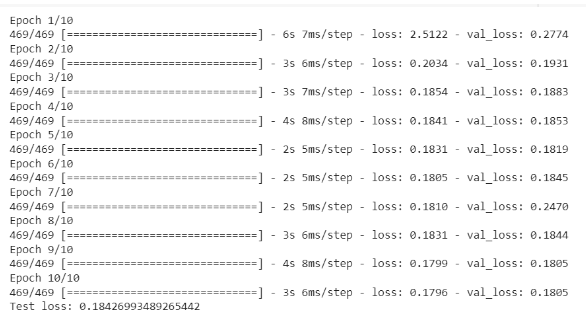Earthquake Prediction and Analysis
- Pushkar Nandgaonkar
- Mar 31, 2024
- 4 min read
Introduction
Welcome to our blog post! Today, In this blog we will discuss project requirement titled "Earthquake Prediction and Analysis Project." This project involves gathering and analyzing earthquake data alongside tectonic plate movement data to predict various aspects of earthquakes, including magnitude, location, time, and aftershock occurrences.
Project Requirements :
Data Collection and Cleaning:
Gather two datasets: one containing natural earthquake data and the other containing tectonic plate movement data.
Perform data cleaning to handle missing values, outliers, and inconsistencies in the datasets.
Predictive Modeling:
Implement algorithms such as Support Vector Machine (SVM) and Long Short-Term Memory (LSTM) for earthquake prediction.
Train the models to predict the location, time, and magnitude of earthquakes based on the provided datasets.
Data Integration:
Explore methods to merge both datasets, if feasible, to extract more insights and enhance prediction accuracy.
Assess the compatibility and relevance of features from both datasets for integration.
Aftershock Prediction:
Investigate the possibility of predicting aftershocks based on the merged dataset or individual datasets.
Implement appropriate algorithms or models to predict aftershock occurrences.
Algorithm Evaluation:
Compare the performance of SVM and LSTM algorithms in terms of prediction accuracy, computational efficiency, and other relevant metrics.
Determine which algorithm yields better results for earthquake prediction.
Solution Approach
In this project, we aimed to analyze earthquake data and predict various aspects such as earthquake magnitude, location source, time, and the likelihood of aftershocks. Below is a detailed overview of the methods and techniques used in the project:
Dataset Used
Earthquake dataset spanning from 1965 to 2016 (EQ 1965 to 2016.xlsx).
Tectonic Plates dataset (Tectonic Plates Datasets.xlsx).
Main Earthquake Dataset:
This subset consists of 23,412 entries and 21 columns.
The columns include various attributes related to each earthquake, such as the date and time of occurrence, geographical coordinates (latitude and longitude) of the epicenter, earthquake type, depth, magnitude, and additional parameters.
Some columns contain missing values, such as depth error, magnitude error, azimuthal gap, and others. These missing values indicate uncertainty or lack of data in certain measurements.
The dataset provides comprehensive information about each earthquake event, enabling analysis of seismic activity patterns, magnitude distributions, and geographical distributions of earthquakes over time.
Plate Information Subset:
This subset contains 12,321 entries and 3 columns.
The columns include plate information, latitude, and longitude.
Unlike the main earthquake dataset, this subset does not contain missing values.
It provides additional geological information about tectonic plates associated with earthquake occurrences, allowing for analysis of earthquake distribution in relation to plate boundaries and movements.
Data Processing Techniques
Handling Missing Values:
Columns with missing values were dropped (NaN values) from the earthquake data.
Missing values in the 'Magnitude Type' column were imputed with the most frequent value for each group.
Date and Time Parsing:
The 'Date' and 'Time' columns were parsed and formatted correctly.
Incorrect dates and times were identified and corrected.
Label Encoding:
Categorical columns were encoded to numerical values using LabelEncoder.
Feature Selection
Features such as 'Latitude', 'Longitude', 'Depth', 'Type', 'Magnitude Source', 'Magnitude Type', etc., were selected for various predictions.
Testing and Training
The dataset was split into training and testing sets using train_test_split function.
Algorithms Used
Support Vector Machines (SVM):
SVM was utilized for earthquake magnitude prediction (SVR) and location source prediction (SVC).
Long Short-Term Memory (LSTM):
LSTM models were implemented for earthquake magnitude and time prediction.
For magnitude prediction, an LSTM model with 128 units and 64 units followed by a Dense layer was used.
For time prediction, a similar LSTM architecture was employed with MSE loss function and Adam optimizer.
Other Machine Learning Models:
Random Forest, Decision Tree, Naive Bayes, K-Nearest Neighbors (KNN) were also utilized for aftershock prediction.
Logistic Regression was employed alongside LSTM for aftershock prediction.
Evaluation Techniques
For regression tasks (magnitude and time prediction), mean squared error (MSE) was used for evaluation.
For classification tasks (location source and aftershock prediction), accuracy score was utilized.
Output Analysis
Visualizations such as loss curves and accuracy plots were generated to analyze the performance of LSTM models.
Count plots were created to visualize the occurrence of aftershocks.
Outputs :
In this section, we will showcase Some output screenshots obtained after completing the aforementioned project tasks. These screenshots will demonstrate the successful execution and outcomes of the "Earthquake Prediction and Analysis" Project.
At CodersArts, we're excited to introduce our latest venture focusing on earthquake prediction and analysis. With our expertise in data collection and predictive modeling, we aim to unravel the intricacies of seismic activity and tectonic plate movements. Leveraging advanced algorithms such as Support Vector Machine (SVM) and Long Short-Term Memory (LSTM), we're poised to predict earthquake attributes such as magnitude, location, and occurrence time with precision.
From gathering and cleaning datasets to implementing state-of-the-art algorithms, our team guides you through each phase of the project with meticulous attention to detail. By exploring methods to merge earthquake and tectonic plate movement data, we strive to extract valuable insights that enhance prediction accuracy. Our focus extends to aftershock prediction, where we employ a variety of machine learning models to anticipate post-earthquake occurrences.
At CodersArts, our commitment to excellence is unwavering. We don't just analyze data; we deliver actionable insights that drive informed decision-making. Through rigorous evaluation techniques and insightful visualizations, we provide a comprehensive understanding of seismic activity patterns. Trust us to navigate the analytical landscape and unlock the full potential of earthquake prediction for your organization.
If you require any assistance with the project discussed in this blog, or if you find yourself in need of similar support for other projects, please don't hesitate to reach out to us. Our team can be contacted at any time via email at contact@codersarts.com.







Comments